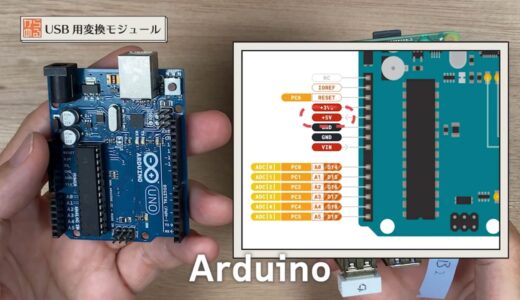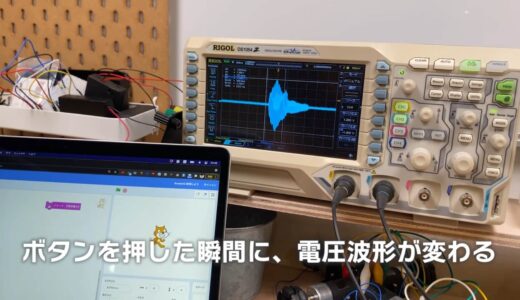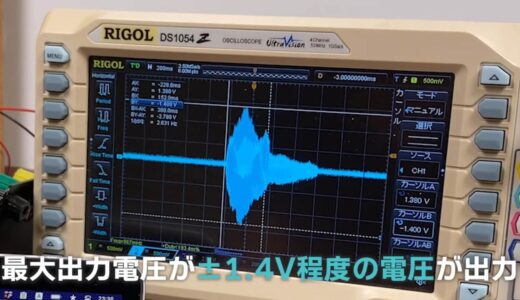YouTube
0:00 Opening
0:33 What is a conversion module?
1:28 Recommended Conversion Modules for Breadboards
4:39 One Point Advice
5:15 Summary.
Introduction of conversion modules that are perfectly compatible with breadboards


This article describes a conversion module that works perfectly with breadboards.
We will explain what a conversion module is and also introduce four recommended conversion modules, so you don’t have to worry if you don’t have any components or power supply terminals.
What is a conversion module?
First of all, what is a conversion module anyway? First of all, let us briefly explain what a conversion module is.

Breadboards are convenient, but their drawback is that “only pin pluggable type components can be used.
However, as shown in the following image, there are many useful conversion modules available in the world to enable the use of various components on breadboards.

The same thing can be done without using a conversion module by cutting cables, pulling out wires, soldering, etc. However, the following advantages can be obtained by using a conversion module.
- No soldering or other work is required, and circuits can be assembled quickly, increasing development efficiency.
- Can be securely fastened to a breadboard for increased reliability and safety

Four conversion modules recommended for electronics applications
Next, we would like to introduce the following four conversion modules recommended for electronic construction applications.
- Conversion module for USB
- Conversion module for DC jacks
- Conversion module for earphone jack
- Conversion modules for chip components
Conversion module for USB
The first recommended conversion module is the “conversion module for USB”.

This module can be used when you want to supply 5V power used by USB to a breadboard.
Many sensors and ICs operate at 5V, and a 5V power supply comes into play quite often in electronic construction.
If you are using a microcontroller board such as Arduino or Raspberry Pi together, there is a pin that outputs 5V, so you can use that.
 |
 |
However, when this is not the case, it is necessary to supply power by some means, and this conversion module for USB is very useful in such cases.
The actual pin assignment of USB is as follows.

To use, attach a general charger commonly used for smartphones and other devices to an AC outlet and plug in the USB.

By connecting the other side to the conversion module and taking the wires out of the 5V and GND lines, respectively, a 5V power supply is ready in no time.

Conversion module for DC jacks
The second conversion module introduced is the “conversion module for DC jacks.

As in the previous example, this one is also used to supply power on a breadboard.
There are two differences from the previous conversion module for USB as follows
- USB is standardized to 5V, so there is only one type of 5V, whereas DC jacks support multiple types of voltage
- For DC jacks, it can take power up to 18V.
It is useful to have a conversion module for DC jacks as well, since higher voltages may be required when driving motors or for some types of sensors.
For example, this is a power adapter for speakers used at home.

The specification is 17.0V DC output, so when you plug it into a 100V outlet, 17.0V will be output from the DC jack on the end of it.

When actually plugging it into the breadboard and checking it with a tester, we can see that 17V is indeed being output.

Conversion module for earphone jack
The third recommended conversion module is the “conversion module for earphone jack.

Although it is not well known, the earphone jack terminal can extract weak electric power and can be played with in various ways in electronic construction applications.

I will present the details separately, but for now I would like to use the cat’s meow from scratch to show you where the voltage can be extracted.
The “meow sound” button is used to make a meow sound.

Now let’s connect the PC and the conversion module with a cable and watch this cat’s meow on an oscilloscope’s voltage waveform.

The voltage waveform changes at the moment the button is pressed.

From a Mac, the maximum output voltage is about ±1.4V when the volume is set to Max.

When this voltage is smoothed and used as direct current, simple circuits can be operated, such as lighting an LED.
Conversion modules for chip components
The last recommended conversion module is the “conversion module for chip components.

There are many cases where a customer has only chip components on hand, but really wants to use them on a breadboard.
In such cases, use this conversion module for chip components, which allows chip components to be placed on breadboards.
There are a number of different types, so most chip components should be able to be converted.
These are the four types of conversion modules.

- Conversion module for USB
- Conversion module for DC jacks
- Conversion module for earphone jack
- Conversion modules for chip components
Finally, we will summarize the sites and pages where you can purchase these conversion modules for your reference.
| type | (technical) specification | Price | Purchase Page |
| USB conversion module | USB2.0 typeB | 120 yen | https://akizukidenshi.com/catalog/g/gK-07429/ |
| USB2.0 microUSB | 200 yen | https://akizukidenshi.com/catalog/g/gK-06656/ | |
| USB2.0 with microUSB serial conversion function | 600 yen | https://akizukidenshi.com/catalog/g/gM-08461/ | |
| DC Jack Conversion Module | Inner diameter 2.1mm | 30 yen | https://akizukidenshi.com/catalog/g/gC-09408/ |
| Earphone jack conversion module | 3.5mm stereo | 150 yen | https://akizukidenshi.com/catalog/g/gK-05363/ |
| Chip Component Conversion Modules | SOP8 | 100 yen | https://akizukidenshi.com/catalog/g/gP-05154/ |
| SOT23-3 | 80 yen | https://akizukidenshi.com/catalog/g/gP-03659/ |
advice of a point (advice that may be helpful to some people)
I have one piece of advice.
When using a conversion module such as the one described above, you should also obtain a component called a pin header.

The conversion module sticks to the breadboard via this pin header, and it is recommended to have more pin headers on hand.
In most cases, the pin headers are included with the conversion module when it is purchased, but sometimes they are not included, or they are often lost because they fly off the moment they are cut.
The brand “HiLetgo ” sells a large quantity of pin headers for about 600 yen, so this is recommended.

summary
In this issue, we have introduced four conversion modules that are compatible with electronic construction for those who want to use breadboards further.
With the conversion module, you can get even more out of your breadboard.
This site also provides other videos and articles to help beginners learn electronics construction systematically from zero, including explanations of the minimum knowledge and tools they need to acquire.

Please also refer to the following pages for more information!
 Start electronics
Start electronics 



